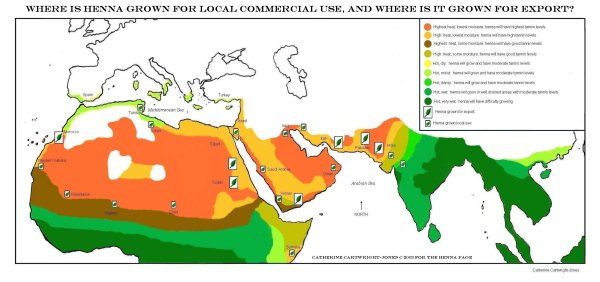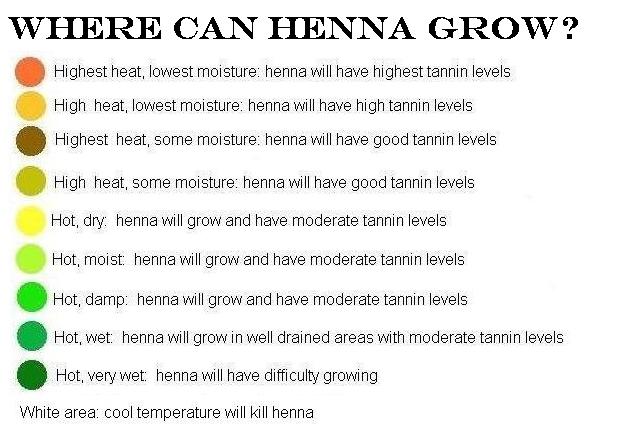Where Is Henna Grown commercially?

Click HERE or on the picture above to see this map at full size.
You will have to scroll around to see the full map, it's very large!
Have fun!
| This shows the areas where henna is grown
commercially for
local use, and where it is grown commercially for export. The
geography
shows you why.............
Henna will only grow where the minimum temperature is above 60
F or
11 C. Henna grows better in arid regions than wet regions. The hottest, driest regions have henna with the highest levels
of tannin
that make the darkest stains. Henna from these areas can be dried,
powdered,
and sold. Here are the keys to the map above: 
Return to the Henna Map Index: Can't find what you want
here?
Try The Henna
Page
Main Index. |
